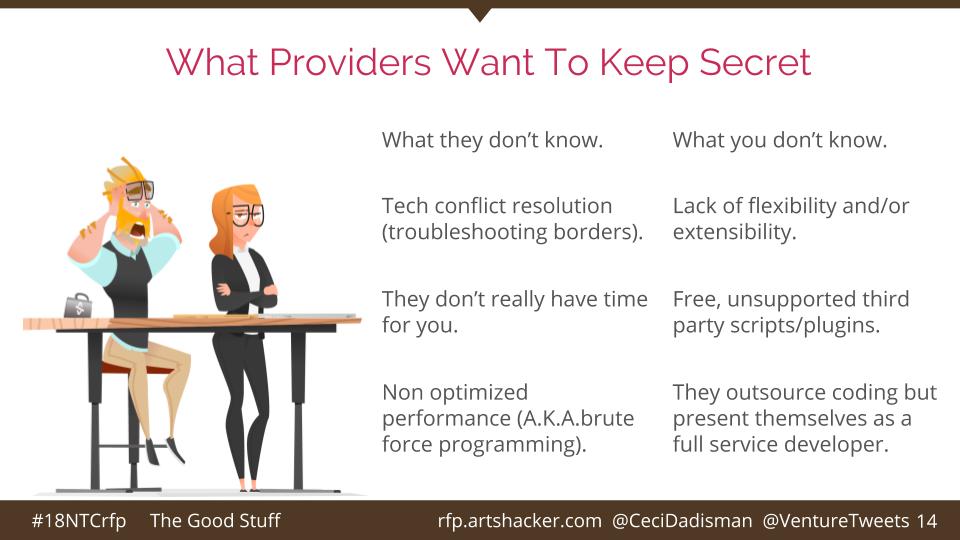In his reflections on attending the 2018 Nonprofit Technology Conference, Drew McManus noted how many presenters at the conference packed too much text on to Powerpoint slides. He observes the text was so dense and the font size so small on some slides he had to take a picture with his phone so he could magnify it to legibility.
I immediately knew I needed to pull out a post Seth Godin made earlier this month on that very subject. In discussing how to most effectively use a Powerpoint presentation, rule one was not to read the slide content aloud and rule four was to see rule one.
Additionally, he wrote:
2. But even better, remember that slides are free. You can have as many as you like. That means that instead of three bullet points (with two sentences each) on a slide, you can make 6 slides. Or more. The energy you create by advancing from slide to slide will seduce most of the people in your audience to read along to keep up. Slides that people read are worth five times more than slides that you read to them.
3. Better still, don’t use words. Or, at the most, one or two keywords, in huge type. The rest of the slide is a picture, which I’m told is worth 1,000 words. That way, the image burns itself into one part of the brain while your narrative is received by the other part. The keyword gives you an anchor, and now you’re hitting in three places, not just one.
5. Many organizations use decks as a fancy sort of memo, a leave-behind that provides proof that you actually said what you said. “Can you send me the deck?” A smart presenter will have two decks. One deck has plenty of text, but then those pages are hidden when the presentation is performed live.
I think people in the arts can really appreciate these points because they understand the value of pacing and using images to convey your message. There may be some reticence to do so for fear of breaking some rules of business decorum. Godin is basically giving people permission to flex those skills.
Just remember that too much flash and spectacle can detract and distract from your core message.
I love rule five. I had never considered having an enhanced version of a slide deck that you could send to those who requested it until I read this post. If you read my post last Wednesday, you know this is exactly what Drew did when he made the version of the presentation Ceci and he delivered available with all the background notes.
I was a little tickled to see that Godin’s post in early April about paring down the content of Powerpoint presentations was itself a pared down version of a post he made 11 years ago. That post in turn, was pulled from an ebook he wrote four years earlier. A little practicing what one preaches!
That is also the secret to delivering good presentations–practice and revisions. Practice and revise multiple times before the first presentation and then continue to do so every time you revisit the content.
As with so many things, there is a tendency to believe an effective speaker possesses an inborn talent and genius for a turn of phrase. One of the benefits of having so much video and audio content available online is that when you watch or listen to a favorite speaker, you have many opportunities to note how they continue to weave familiar content in and out of their addresses and evaluate how they are improving over time (or getting a little stale).



Thanks for what you are doing to bring cultural change to the arts. It is so important to represent everyone.…